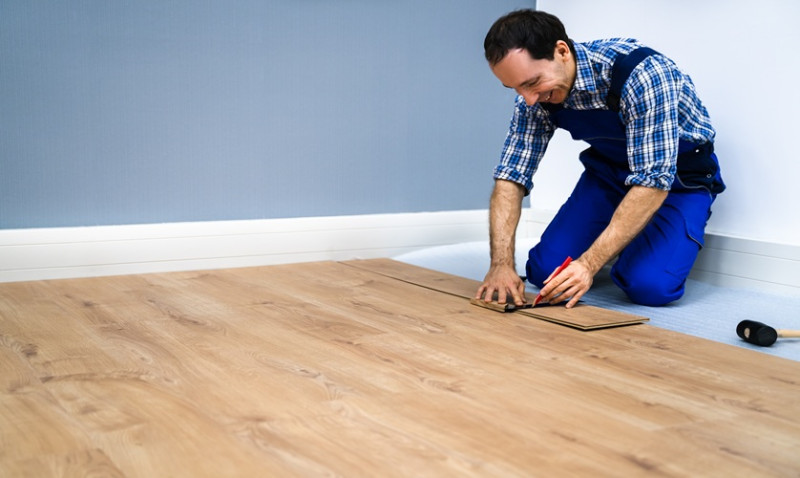
Choosing the right wood finish for your floors, furniture, or worktops can be a daunting task—especially with the myriad of products on the market today. For UK homeowners, DIYers, architects, and professional tradesmen alike, the decision often comes down to balancing durability, aesthetics, ease of application, and environmental impact. One product that consistently rises to the top of these requirements is Hard Wax Oil.
But what exactly is Hard Wax Oil, and is it really the best option for your wood? In this post, we’ll explore the benefits, drawbacks, and considerations to help you decide if this finish is the right choice for your next project.
What is Hard Wax Oil?
Hard Wax Oil is a blend of natural oils and waxes designed to penetrate the wood surface and protect it from within while leaving a matte to satin finish on top. It combines the best of both oil- and wax-based systems—providing deep nourishment, a warm appearance, and a strong, protective barrier against everyday use.
Unlike polyurethane finishes, which form a thick film over the wood, Hard Wax Oil works by soaking into the fibres and preserving the wood’s natural texture. This allows the wood to breathe and adjust to changes in environmental humidity, reducing the risk of cracking and warping over time.
The oil component in the mix (typically linseed or tung oil) penetrates deep into the wood grain to strengthen it, while the wax sits on the surface, helping to repel water and dirt. It’s a perfect balance for high-traffic areas like living rooms, kitchens, hallways, and even commercial interiors.
Benefits of Using Hard Wax Oil
Hard Wax Oil offers a wide range of benefits that make it popular among UK professionals and DIY enthusiasts. Here's why it's gaining serious traction in both modern and traditional design:
- Enhanced Natural Aesthetics: Hard Wax Oil enhances the natural grain and beauty of the wood without forming a plastic-like film. The finish is soft, warm, and organic—ideal for Scandinavian, rustic, and contemporary interiors.
- Spot Repairable: One of the biggest advantages of Hard Wax Oil is that it can be spot repaired. Unlike varnishes, which require full sanding for touch-ups, minor scratches or surface wear can be fixed easily without affecting the rest of the surface.
- Durability Without Plastic: Thanks to its unique composition, Hard Wax Oil provides long-lasting protection without creating a 'sealed' barrier. This means that the wood remains resilient while still retaining its natural feel underfoot.
- Eco-Friendly & Low VOC: Many brands of Hard Wax Oil available in the UK today, such as Osmo and Treatex, are solvent-free or low-VOC, making them safer to use in enclosed environments and more eco-conscious.
- Resistant to Spills and Stains: While it's not 100% waterproof like synthetic sealants, Hard Wax Oil is highly water-repellent and resistant to common spills—ideal for wooden kitchens and dining tables.
Where to Use Hard Wax Oil
One of the reasons Hard Wax Oil is so versatile is due to its wide applicability. Whether you're refinishing your Edwardian floorboards or protecting a bespoke oak countertop, this finish provides a sophisticated yet practical barrier.
Wood Flooring: Perfect for both solid wood flooring and engineered wood, Hard Wax Oil gives a natural, slip-resistant finish that’s comfortable to walk on and breathable for the wood substrate.
Furniture: Tables, chairs, shelving, sideboards, and built-ins all benefit from the warm and subtle beauty of an oiled finish. It brings out details in antique woods and adds charm to contemporary pieces.
Worktops & Kitchen Units: Opt for food-safe Hard Wax Oils that are suitable for kitchen counters or breakfast bars. They resist staining and repel water—plus they’re easy to maintain between meals or seasons.
Wooden Walls & Ceilings: Yes, timber cladding or panelling also benefits from a coat—or two—of Hard Wax Oil. Whether you’re creating a feature wall or coating a converted barn, it adds both warmth and protection.
Comparison: Hard Wax Oil vs Other Finishes
If you're weighing up your options, the table below compares Hard Wax Oil against other commonly used finishes in the UK market:
| Finish Type | Appearance | Durability | Application Difficulty | Maintenance | Breathability |
|---|---|---|---|---|---|
| Hard Wax Oil | Natural, Matte/Satin | High | Moderate | Easy, Spot Repairable | Yes |
| Polyurethane Varnish | Glossy, Artificial | Very High | Moderate to Difficult | Hard to Touch Up | No |
| Natural Oils (Linseed/Tung) | Very Natural | Medium | Easy | Frequent Reapplication Needed | Yes |
| Wax Only | Soft Sheen | Low | Easy | Buffing and Regular Reapplication | Yes |
Application Tips for DIYers and Professionals
Applying Hard Wax Oil is relatively straightforward, making it a popular choice for both DIY home renovators and experienced tradesmen. Here are some expert tips to ensure you get the best results:
- Surface Preparation is Key: Sand the surface thoroughly and remove all dust—Hard Wax Oil adheres best to clean, bare wood.
- Thin and Even Layers: Apply thin coats using a brush, roller or cloth. Two coats are standard, with drying time in between. Thicker coats can lead to tacky or uneven results.
- Work in Sections: For larger projects like flooring, work in manageable sections to maintain a wet edge and avoid lap marks.
- Ventilate Your Workspace: While many oils are low in VOCs, it’s always best to work in a well-ventilated area to promote faster drying and safer conditions.
- Buff for a Silkier Finish: Buffing the second coat with a white pad or soft cloth gives the surface a beautiful lustre and smooth feel.
Care and Maintenance
One of the biggest draws of Hard Wax Oil is its ease of maintenance. Unlike varnishes that flake or peel, this finish wears gently—and can be revitalised without sanding down the entire surface.
Regular cleaning requires little more than sweeping or wiping with a damp cloth. For deeper cleans, special soaps made for oiled surfaces are available, which won’t strip away the finish.
If a part of the surface experiences wear—say, high-traffic doorway areas—you simply clean, lightly sand, and reapply the oil to that section. No stripping, no harsh chemicals, no full-room upheaval.
Is Hard Wax Oil Right for You?
Ultimately, Hard Wax Oil offers a compelling blend of aesthetics, performance, and practicality. While it's not bulletproof like industrial-grade sealants, its ability to combine durability with a natural finish makes it arguably the best wood finish for residential and light commercial spaces.
If you’re a homeowner wanting to showcase the natural character of your wood, or an architect specifying materials that are both stylish and sustainable, Hard Wax Oil presents an ideal middle ground. For professionals, it offers reliable results and responsive maintenance—making it a trusted choice on countless projects across the UK.
Hard Wax Oil might not be the answer to every finishing question—but in most cases, it comes pretty close. And for many, once they try it, they rarely look back.






